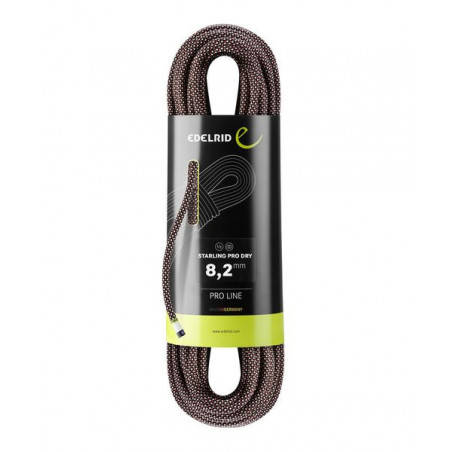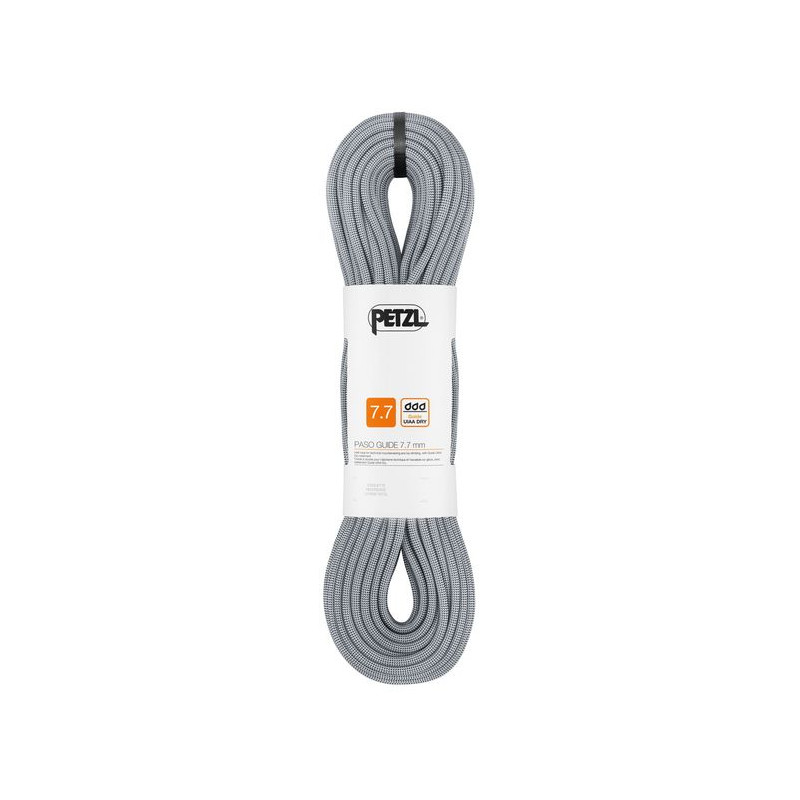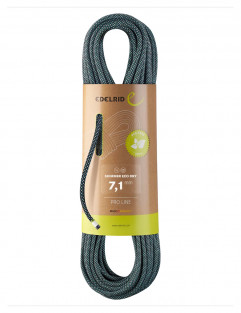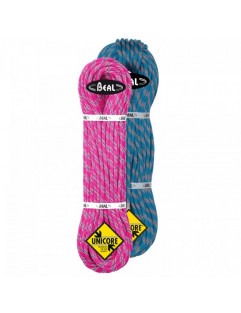New products
Active filters
alpine-ropes
Edelrid - Skimmer Eco Dry 7,1 mm - Night - Mountaineering...activities
Beal - Cobra II 8,6 mm Pack - Golden Dry - Blue/Fuchsia -...
Half Ropes
Half ropes
How to choose a climbing rope?
When going out to buy a climbing rope there are four main features to consider:
- What type of rope do you need?
- What diameter and length should the rope have?
- What features should the rope provide?
- What safety certification should the rope have?
All of these entirely depend on what you need the rope for? Are you going mountaineering? Indoor climbing? Multi-pitch? Etc.
Type of rope
There are three main differences in rope types designed for climbing: single, half, and twin ropes. Furthermore, a difference is made between static and dynamic ropes. In climbing, static ropes are only used when lowering an injured climber or ascending a rope. They are not designed, certified or tested to climb on because they stretch very little, that's what dynamic ropes are made for.
Half Ropes:
When using half ropes, you climb with two ropes. As you ascend, clip one rope to protection on the left and the other to protection on the right. This allows the ropes to run parallel and straight, thereby reducing rope drag on wandering routes. Half ropes are ideal for trad climbing on wandering multi-pitch rock routes, mountaineering and ice climbing. They do have their positive and negative sides. What is good about them is the reduced rope drag on wandering routes; two ropes can rappelle further than 1 rope; if one rope gets damaged you still have a second one. The downside to this style is first of all more weight, since you are carrying two ropes; and the handling of 2 half ropes is harder than that of a single rope. It's important to only use a rope the way it was designed and tested to be used.
Half ropes are marked with a circled ½ symbol on each end.
Half ropes are best for trad climbing on wandering multi-pitch rock routes, mountaineering and ice climbing.


Climbing rope diameter:
The rope diameter of a rope can vary quiet a bit and can make a huge difference on your climbing experience. Thinner ropes for example have the advantage of being lighter than thicker ropes but at the same time they are not as robust and need more skill when belaying with them. So depending on wether you are top roping in your local gym/crag or going for long distance multi-pitches you'll want something completely different.
Half ropes have a diameter of about 8-9 mm.
Rope features:
When comparing ropes these are some features to look for:
- Dry treatment is designed to reduce the ropes water absorption. While a rope is wet it becomes less resistant to falls, and if it should freeze, the rope becomes very hard to handle. Dry treatment is important should you plan on ice climbing for example.
- Middle Mark is a black dye mark half way of the rope to indicate that you have half of the length left.
- End warning marks are shown on some ropes when approaching the end of the rope
The choices are endless and difficult today so contact our Customer Service or send us a mail to help you choose the right product for your needs.
Shop online.........more time to climb.
Casper's Supports Your Summit








